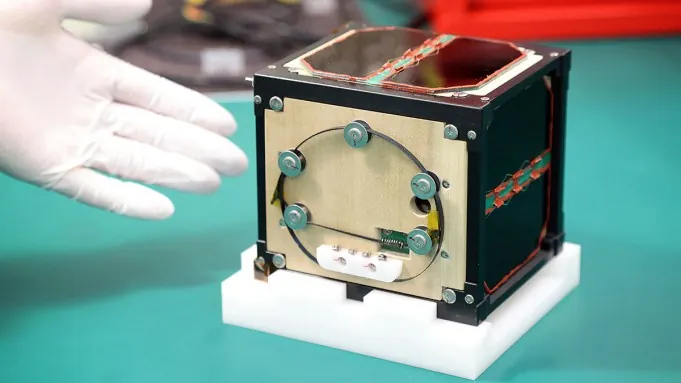
Revolutionary Breakthrough: Japan Launches the First-Ever Wooden Satellite into Space!
2024-11-06
Author: Emily
In a stunning development that could redefine the future of space exploration, Japanese scientists have successfully launched the world’s first wooden satellite into orbit. Dubbed LignoSat, this innovative cube-shaped satellite took flight aboard a SpaceX rocket from Florida’s Kennedy Space Center and will be conducting experiments in low Earth orbit over the next six months.
The groundbreaking initiative has its roots in collaborative research between Kyoto University and Sumitomo Forestry, a prominent Japanese timber company. This project seeks to explore the resilience of renewable materials like wood in the harsh environment of space, which presents challenges such as extreme temperatures, cosmic radiation, and heavy solar activity. Furthermore, this endeavor aims to address the environmental impact of traditional satellite launches by reducing the pollution typically associated with metal satellites.
Professor Koji Murata, a key figure from Kyoto University’s forest and biomaterials science department, remarked, “Historically, the idea of using wood in aerospace technology seemed far-fetched. Many believed that wood was outdated and unsuitable for cutting-edge advancements.” However, Murata, inspired by the use of wood in early 20th-century aviation, undertook the challenge with the support of esteemed engineer and former NASA astronaut Takao Doi, who posed the idea in 2017.
The journey began with a series of experiments in 2022, where the team sent three wood samples—birch, cherry, and magnolia—aboard the International Space Station. After eight months in microgravity, the results were astonishing: the wood showed no signs of decomposition or significant surface damage. Consequently, the researchers chose to construct LignoSat with magnolia, valued for its lightweight properties and durability.
Master carpenters from Kyoto employed traditional techniques to assemble the satellite’s wooden components alongside plastic and silicon parts, all without resorting to screws or glue. They deliberately designed the satellite to not only measure the Earth’s magnetic field but also to observe how wood reacts in space, specifically its tendency to contract when moisture is lost.
As LignoSat completes its mission, it is expected to re-enter the atmosphere in an environmentally friendly manner. Unlike conventional metal satellites that release harmful aluminum oxide particles upon burning up, LignoSat will emit only water vapor and carbon dioxide, thus reducing its ecological footprint.
Looking to the future, Professor Murata has ambitious aspirations: "I dream of cultivating wood on Mars," he stated confidently. "What once seemed impossible is now on the horizon." His vision raises fascinating questions about the intersection of sustainability and space colonization.
As the world watches, the launch of LignoSat marks a pivotal moment in aerospace science, opening doors to a new era of sustainable technology in space. Who knows what other revolutionary advancements lie ahead? Stay tuned!









 Brasil (PT)
Brasil (PT)
 Canada (EN)
Canada (EN)
 Chile (ES)
Chile (ES)
 España (ES)
España (ES)
 France (FR)
France (FR)
 Hong Kong (EN)
Hong Kong (EN)
 Italia (IT)
Italia (IT)
 日本 (JA)
日本 (JA)
 Magyarország (HU)
Magyarország (HU)
 Norge (NO)
Norge (NO)
 Polska (PL)
Polska (PL)
 Schweiz (DE)
Schweiz (DE)
 Singapore (EN)
Singapore (EN)
 Sverige (SV)
Sverige (SV)
 Suomi (FI)
Suomi (FI)
 Türkiye (TR)
Türkiye (TR)